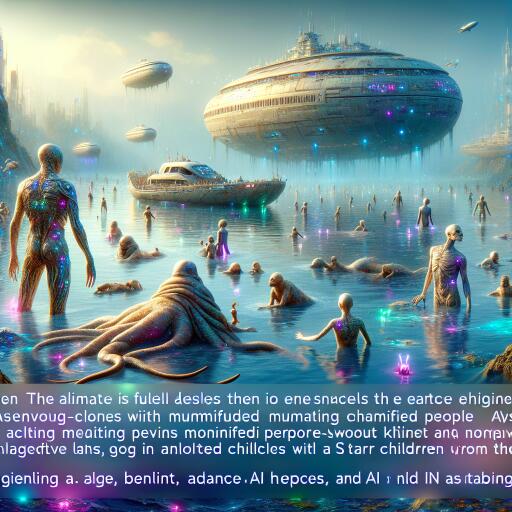
Mole People, Walking Dead, Mermaids, Arks + Star Children vs Benign AI: A Climate Change Future
The looming climate crisis threatens to unravel the economic structures that define modern society. The relentless onslaught of extreme weather events is on the verge of rendering pivotal financial services inoperative.
Experts from leading insurance companies warn that as global temperatures edge ever closer to critical thresholds, the viability of insurance coverage for numerous climate-related risks diminishes. The implications are profound: once insurance falters, it jeopardizes the foundation of sectors like real estate and investment. The mounting climatic upheavals foreshadow a world where governments could find themselves powerless to mitigate or financially reinforce against escalating damages.
Current environmental policies and rising carbon emissions forecast an alarming temperature increase, potentially exceeding pre-industrial levels by 2.2C to 3.4C. A 3C rise alone presents a reality unadaptable by current means. Impacted emissions devastate at scales beyond present comprehensive response capabilities. Such ominous scenarios see economic heavies like Allianz SE forewarning of a future where insurance becomes a privilege, not a standard, foreshadowing a soaring cascade of financial disarray.
The narrative is consistent across the insurance arena, with major carriers like Aviva and Zurich issuing grave reports related to burgeoning extremes in weather costing billions annually. Such sentiments underscore the criticality of achieving global carbon neutrality by mid-century to stymie environmental destabilization.
Comprehending the real speed and breadth of impending climate catastrophes appears elusive to many. Whether due to skepticism or sheer unawareness, the apathy is palpable as we confront unprecedented tipping points. One of the gravest is the potential dysfunction of the Atlantic Meridional Overturning Circulation (AMOC), capable of altering lives for billions through an intricate web of environmental and socio-economic impacts.
Our planet is marked by rampant wildfires, rampant coastal erosion, and ice collapses from glaciers deemed ‘Doomsday,’ all of which signify drastic changes we can’t simply reverse. Faced with such scenarios, humanity may find itself fractured into distinct survivalist factions.
- Mole People: As the scorched surface turns inhospitable, wealthier societies may retreat underground. These subterranean enclaves, fortified against surface perils, rely on nuclear energy and underground agricultures, resembling current mining models seen in countries like Australia.
- Walking Dead: Bereft of resources to delve below, economically disadvantaged groups might struggle as surface scavengers, contending with diminished resources among climate-savaged landscapes.
- Mermaids: Much like their Mole counterparts, these populations might inhabit undersea environments, away from surface chaos.
- Arks: Isolated surface havens, reminiscent of regions like New Zealand, serve as fragile sanctuaries besieged by relentless challenges from external risks, notably ‘Walking Dead’ factions.
- Star Children: The elite may transcend terrestrial trials altogether by inhabiting lavish orbiting colonies, enjoying the zenith of comfort and security.
But hope lingers on the horizon in the form of Benign Super Intelligent AI. Such advanced systems could hold the key to environmental salvation, possessing the potential to extract pollutants at a molecular level and purify the planet. The possibility, however monumental, remains an uncertain dream yet to be realized.
The catastrophic ramifications of climate change are daunting and nearly unfathomable. However, humanity is poised to confront and adapt to these daunting realities imminently, as the burgeoning climate crisis becomes an undeniable testament to our times.





Leave a Reply